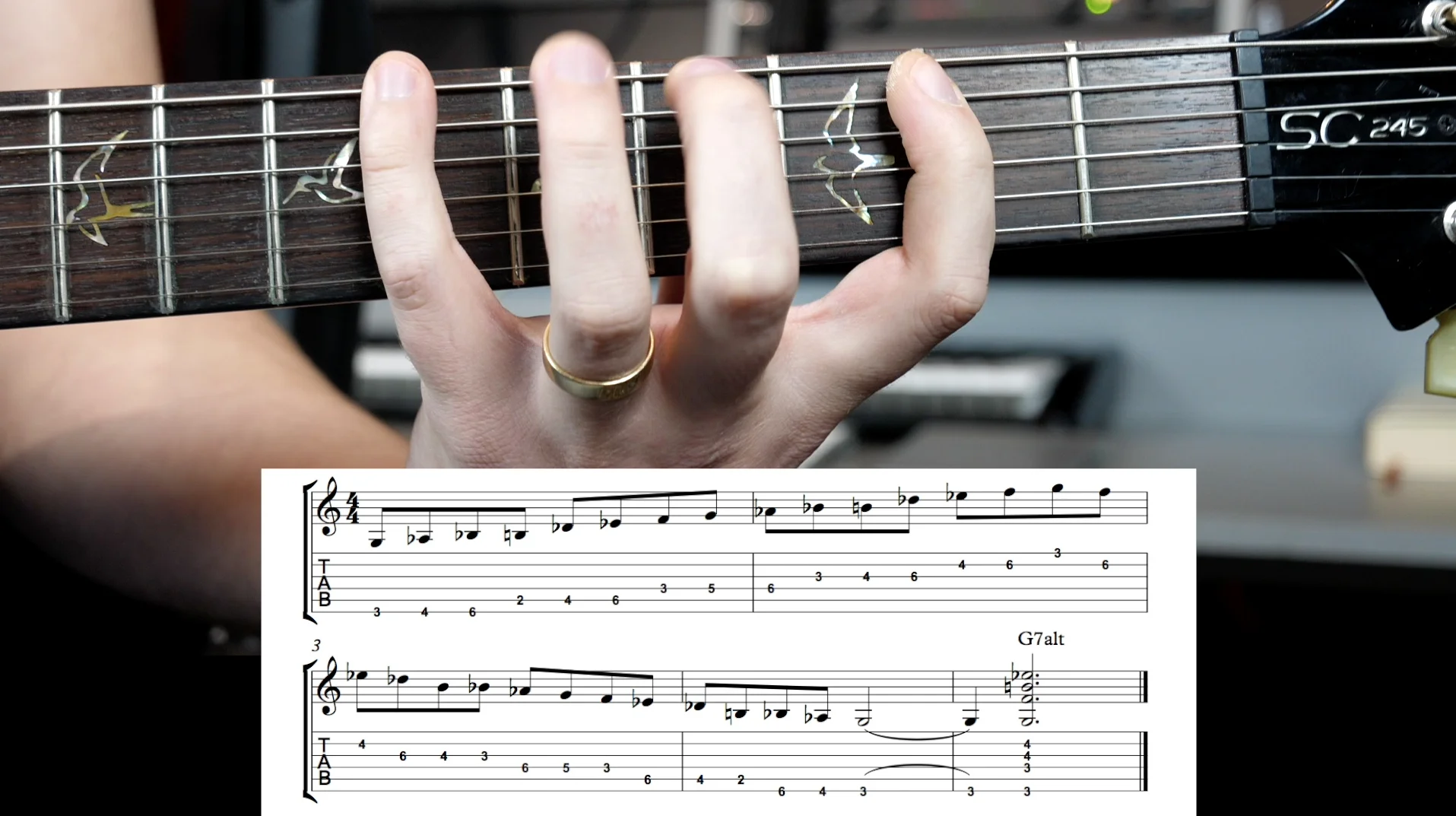We’re going to talk about the Chromatic Scale! First, it’s important to know that a majority of the scales and chord shape examples in Guitar Super System are based out of the G Major Scale. With that in mind, the shapes and patterns you’ll learn can be moved around anywhere on the neck, and I’ll show you how to do that when it applies.
Understanding the Chromatic ScaleLearn about the foundation of all guitar scales - The Chromatic Scale! Check out the full Guitar Super System course at http://udemy.com/guitar-super-system-level-1-unlock-your-potential/
Posted by Music is Win on Monday, August 17, 2015
The Chromatic Scale is the ultimate scale in the music universe. Every other scale you can think of is derived directly from the Chromatic Scale. The basis behind that is the Chromatic Scale is actually made up of every single note in an octave.
Written out, the Chromatic Scale would look like this (remember, we’re starting on G, which is the third fret of the low E string):

As you can see, to play the Chromatic Scale, you’ll simply play each note in order until you reach the octave. In this example, we play two octaves of the Chromatic scale. In case you’re wondering, an octave is the interval between one note and another which sounds at the same pitch. In the G Chromatic Scale, we start on G, and continue until we get to the next G - its octave. We then continue up to the G note on the high E string - the second octave.

As you’re probably hearing, the Chromatic Scale doesn’t sound very good on its own. The good news is we’re only talking about the Chromatic Scale for your understanding — we won’t spend any more time playing it in this way. As long as you are aware of the Chromatic Scale, that’s all that matters at this point. When you learn other scales and are working on your improvisation, you’ll begin to see how the Chromatic Scale can be used in a musical context.
What’s the most iconic guitar solo written in 10/8?
Writing music without instruments is both challenging and rewarding.
Applying concepts to songs you love is the best way to learn.
Three-notes-per-string is the fastest and most effective way to learn scales.
Come on down the music theory rabbit hole with me and Bryan.
This type of guitar playing will move your listeners every time.
The fretboard is a roadmap: there are endless ways to reach the same place.
































Prepare to play the most meaningful music you ever have.